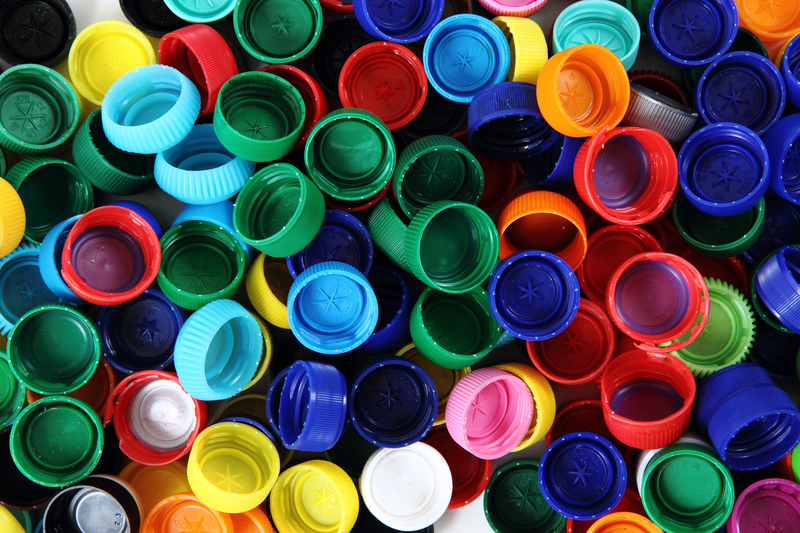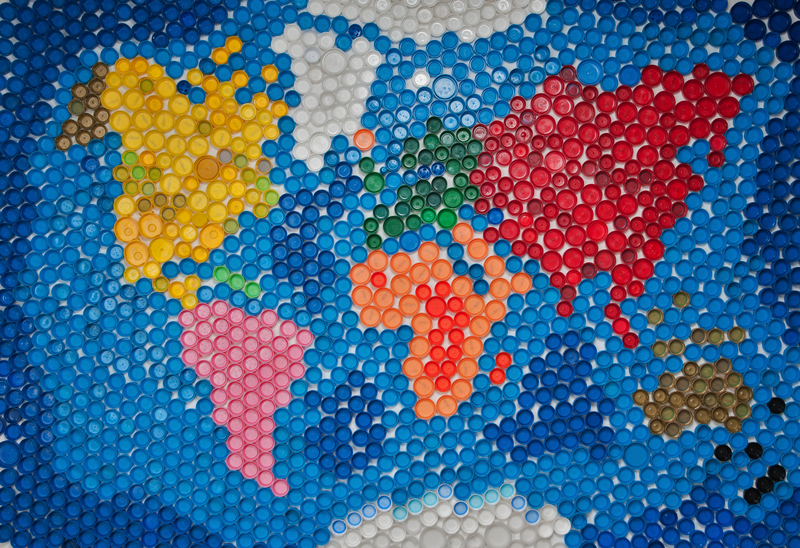Making the Most of Every Pot and Pan Through Recycling
Have you ever wondered what happens to your old cookware? Those battered pans and worn-out pots that have served countless meals don't have to end up in a landfill. Recycling your cookware is not only environmentally responsible, but it can also spark creativity and even save you money. Below, we'll explore how you can make the most of every pot and pan through recycling, repurposing, and reusing, while reducing waste and supporting a sustainable lifestyle.

Why Recycle Your Old Pots and Pans?
Most households accumulate a collection of well-used pots and pans that eventually become less effective. Maybe the nonstick coating is peeling, the handles are loose, or the bottoms are warped. But simply tossing cookware into the trash isn't the best solution. Here's why recycling your cookware matters:
- Reduces landfill waste: Cookware is often made from recyclable metals (aluminum, stainless steel, or copper) that can be processed and reused.
- Conserves resources: Recycling metals saves significant energy and raw materials compared to mining new ore.
- Limits environmental impact: Fewer items heading to the landfill means less methane production and soil/water contamination.
- Encourages creative reuse: Old pots and pans can find new life in your kitchen, garden, or craft room!
By making the most of every pot and pan through recycling, you help create a more circular and efficient system that benefits the environment and your wallet.
Understanding Different Types of Cookware Materials
Before recycling, it's important to identify what your cookware is made from. Most pots and pans fall into these categories:
- Stainless Steel: Highly recyclable and durable. Most recycling centers accept stainless steel cookware.
- Aluminum: Lightweight, efficient, and very commonly recycled. Must be clean and free from plastic or rubber.
- Copper: Valuable and desirable for recycling, but sometimes mixed with other metals.
- Cast Iron: Heavier, but recyclable, and even more prized for repurposing or restoration.
- Nonstick/Coated Cookware: Trickier to recycle due to chemical coatings. However, some centers or manufacturers accept them.
- Enamelware: Metal coated with porcelain. Some specialized recycling centers will process these.
Knowing the material will help determine the best recycling or reuse method for your unwanted cookware.
Check for Recycle Symbols and Manufacturer Guidance
Some newer pots and pans may feature recycling symbols or instructions on their base. In addition, many leading cookware manufacturers now run take-back or recycling programs for their products.
Recycling Cookware Through Local Centers
If your cookware isn't fit for further kitchen duty, recycling is often the best choice. Here's how to do it efficiently:
Step-by-Step Recycling Guide for Old Pots and Pans
- Clean Your Cookware: Remove any food residue, oils, plastic handles, or non-metal parts. Some centers only accept pure metal items.
- Sort by Material: Separate aluminum, stainless steel, and cast iron, as some centers require this for efficient processing.
- Find a Local Scrap Metal Recycler: Search online for "metal recycling near me," and check if they accept household cookware.
- Check Municipal Guidelines: Some areas allow you to place metal goods in curbside recycling bins, but others require drop-off at a center.
- Manufacturer Programs: Some brands like Calphalon, Le Creuset, or GreenPan offer mail-in or drop-off recycling options. Visit their websites for details.
Note: Teflon-coated and nonstick pans are not always accepted at regular recycling centers due to their chemical coatings. Contact the manufacturer or a specialty recycler to see if they can process these items safely.
Creative Ways to Repurpose Old Pots and Pans
Not only can you recycle cookware, but there are also fun and innovative ways to repurpose them around your home and garden. Making the most of every pot and pan through recycling can mean giving them a brand-new job, well outside the kitchen!
Upcycling Ideas for Old Cookware
- Planters for Gardens and Patios: Drill drainage holes in the bottom and fill with soil for unique, rustic plant pots.
- Bird Baths or Feeders: An upside-down wok or bowl can easily become a charming bird bath when placed on a pedestal.
- Kitchen Decor: Hang vintage pans on the wall or use lids as quirky chalkboards or message boards.
- Storage Organizers: Use deep pots or old muffin trays in craft rooms, garages, or playrooms for pens, screws, or toys.
- Candle Holders and Lanterns: Metal pieces can be transformed into safe, industrial-style candle holders, lanterns, or tealight trays.
- Clocks and Art Installations: Attach a clock mechanism to a frying pan or paint old lids for colorful wall decor.
- Serving Trays or Snack Bowls: Shallow pans, once cleaned and sanitized, can serve snacks or hold party treats.
Your only limitation is your imagination. These creative projects keep cookware out of the waste stream and add personalized flair to your living space.
Charity, Community Programs, and Cookware Donations
Donating gently-used pots and pans is another excellent way to extend their lifespan. Many local charities, thrift stores, shelters, and community kitchens are eager to accept cookware in good condition.
Tips for Donating Cookware
- Check for Functionality: Make sure the handles are attached, there are no significant cracks or chips, and the pan is still usable.
- Clean Thoroughly: Wash and dry your items completely before donating.
- Contact the Recipient: Not all organizations accept cookware, especially nonstick or heavily used items, so call ahead to confirm.
Donating extends the usability of the cookware, helps families in need, and prevents waste.
Easy Repairs and Restoration: Breathe New Life into Old Cookware
Before you recycle or repurpose, consider a few DIY repairs:
- Cast Iron Pans: Strip, reseason, and restore even rusted and grimy pans using household supplies.
- Tightening Handles: Most loose handles on pots can be easily reattached with a screwdriver and a new screw.
- Polishing Stainless Steel: Remove discoloration and restore the shine with vinegar, baking soda, or specialized cleaners.
- Replacing Lids and Handles: Many manufacturers sell affordable replacement parts for popular cookware.
Extending the useful life of your pots and pans before recycling reduces demand for new products and waste.
The Environmental Impact of Cookware Recycling
Making the most of every pot and pan through recycling is about more than being resourceful--it directly benefits the environment:
- Conserves Natural Resources: Recycling metal uses up to 95% less energy than producing new materials.
- Reduces Carbon Footprint: Manufacturing metals from recycled sources emits significantly less greenhouse gases.
- Limits Mining and Extraction: Less demand for raw metal means fewer mines and less habitat disruption.
- Promotes Circular Economy: Recycled cookware can be transformed into new products--from car parts to electronics!
By making smarter choices with household cookware, you actively contribute to a greener and more sustainable planet.
Where Old Cookware Goes: The Recycling Process
Ever wondered what happens to pots and pans after you recycle them? Here's a simplified overview:
- Collection: Scrap metal facilities or specialized programs collect the cleaned, sorted cookware.
- Sorting: Metal is sorted by type--aluminum, steel, copper--using magnets and sensors.
- Shredding: Items are shredded or crushed for easier handling and separation.
- Melting: Sorted metals are melted in large furnaces.
- Purification: Metals are purified to remove any contaminants, ensuring high-quality recycled material.
- Solidifying: Molten metal is poured into molds to form blocks, ingots, or sheets.
- Manufacturing: These raw materials are then used to make new products--potentially even new cookware!
With this process, your old pots and pans could return to stores as brand new items!
Tips to Prolong the Life of Your Cookware (Before Recycling)
The best type of recycling is preventing waste altogether. Here are some tips to help you get the most out of every purchase:
- Choose Quality: Invest in durable cookware from reputable brands, especially stainless steel, cast iron, or copper.
- Follow Care Instructions: Each type of cookware requires different care. Avoid high heat for nonstick, always dry cast iron, and prevent warping by cooling pans before washing.
- Avoid Metal Utensils in Nonstick: Use wooden or silicone tools to prevent scratching.
- Store Carefully: Stack items with padding, or hang to avoid damage.
- Perform Regular Maintenance: Inspect rivets, screws, and handles for wear and tighten or replace when needed.
Making the most of every pot and pan through recycling starts with mindful purchasing, proper use, and regular maintenance.

Recycling Myths: Separating Fact from Fiction
Let's clear up some common misconceptions about recycling cookware:
- "Old pans can't be recycled because of coatings or handles." While plastic or wood handles may need to be removed, most metal pans ARE recyclable after disassembly.
- "It's not worth the effort for just a pot or two." Every item kept out of landfill makes a difference. Small actions add up!
- "Donation is always better than recycling." Donation is wonderful, but only for cookware in safe, usable condition. Damaged or hazardous items should be recycled responsibly.
- "Cookware recycling is expensive or inconvenient." Most recycling options are free or low-cost; many municipal sites make drop-off simple.
By staying informed, you can contribute positively to your community and the planet.
Final Thoughts: Transforming Waste into Opportunity
Making the most of every pot and pan through recycling is a practical, rewarding step toward sustainable living. Whether you donate, recycle, repair, or repurpose, every action helps reduce waste and supports a healthier earth.
- Drop off metal cookware at a local recycler or look up mail-in programs through manufacturers.
- Turn worn-out pans into creative home and garden decor.
- Give usable pots and pans a second chance by donating.
- Stay mindful of your choices. Buy quality, maintain your cookware, and recycle whenever possible.
Together, we can make the most of every pot and pan through recycling, ensuring fewer resources are wasted and more opportunities are created. Start today--the next meal you cook could be the beginning of a greener, brighter future for all!